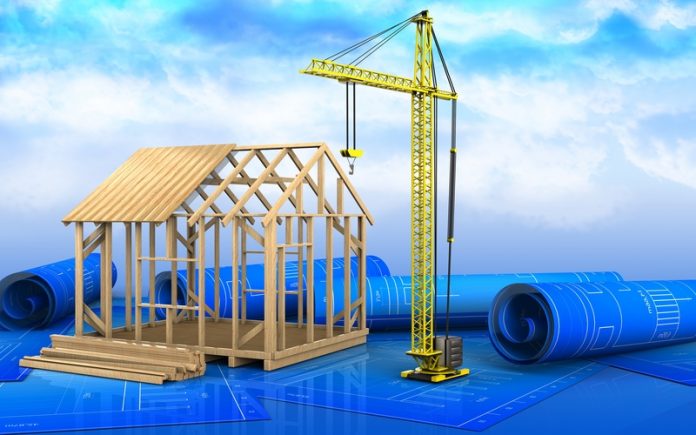Gareth Barber, Managing Director of the Stable Company presents the case for timber frame construction, exploring this truly exciting and high-tech material – and why further research is crucial
Recent research has unearthed new building techniques that could even make timber suitable for high rise developments. Other studies have also highlighted timber’s physiological benefits to humans – this article explores this truly exciting and, surprisingly-to-some, high-tech construction material – and why further research is crucial.
Why choose timber frame construction?
Timber frame construction is the ultimate environmentally- conscious choice. As a 100% renewable building material, timber distinguishes itself from traditional rivals, brick and concrete, whilst also demanding far less energy to manufacture. In addition, timber stores greenhouse gas from the atmosphere. A report by Wood for Good estimated that if all house-building targets in the UK were met with timber frame construction, the UK could become a carbon bank – storing 3.8 million tonnes of CO2 every year.
Financial considerations also make timber frame a popular choice. For many projects – particularly those in the public sector, where budgets are usually tight, such as in the UK – cost is a crucial consideration. These ‘green’ credentials potentially open timber frame construction projects up to funding, grants or other financial support from local authorities. This is not to mention that timber is usually a lower-cost option when compared to brick and concrete, regardless of any extra financial support.
The cost-effectiveness and speed of timber frame construction make it easier and more feasible from a budgetary perspective to factor in other features such as, for example, floor-to-ceiling windows – which maximise natural light (and thereby minimise financial and environmental expenditure on artificial lighting).
Modular buildings are simpler, more practical and cost-effective to adapt as needs evolve than buildings constructed by traditional methods. Interestingly, a study – Behavior Changes in Older.
Persons Caused by Using Wood Products – noted increased talkativeness between subjects when in the presence of wood. Other studies have elucidated timber’s physiological benefits to humans; the presence of wood has been shown to reduce blood pressure and induce feelings of calmness. This makes timber frame construction an evidence-led choice for schools, hospitals, rehabilitative institutions or elderly residential centres.
How does timber perform, however? What about its thermal properties?
Timber is hygroscopic – improving indoor air quality by moderating humidity –making it a very popular material for buildings with sensitive contents, such as garages or simply for keeping its occupants comfortable.
Breathable and naturally-insulating, timber maintains a more stable temperature than concrete or brick and is able to be fully draught-proofed. Timber’s cellular structure contains air pockets which limit the material’s ability to conduct heat. Modern timber frame buildings are also capable of being fitted out with artificial insulation, supplementing these natural properties and already-low thermal heat transfer levels.
This high-tech insulation is contained within the structure in the timber cavity, meaning that the wallsof a timber frame building can be much thinner than concrete or stone, whilst achieving the same level of insulation – also saving on vital building space. The minimum insulation specification is 150 mm glass wool.
Natural properties, combined with the use of innovative artificial insulation, mean that timber frame buildings are cooler in the summer and warmer in the winter. This saves on heating and cooling, thereby non-renewable energy use – a financial and environmental plus point.
The importance of timber research
Tight budgets limit the size and scope of building projects, but can also curb creativity or experimentation. As an inherently more affordable approach, timber frame construction projects give more opportunity to experiment with the wealth of exciting techniques and aesthetic outcomes that exist. By allowing for enterprise with styles, it’s possible to discover ways to further improve the user-friendliness and aesthetics – two hugely important factors in good building design.
Recent timber research has focused on the development and uses of Cross-Laminated Timber (CLT) – an innovative new technique that combines several layers of timber, creating an extremely strong and load-bearing compound. Research and experimentation with CLT – which is as strong as steel – unlocks a whole new range of design possibilities; these have even included plans for a 10-storey timber frame building. Certainly, a twist on the idea of a ‘concrete jungle’.
With environmental sustainability high on the agenda of governments, councils and businesses the world over, CLT is attracting growing attention, placing importance on further research into this building method.
Concrete development accounts for 5% of all carbon emissions; research by Yale University suggests that a global switch to timber would cut the construction industry’s carbon emissions by 31%.
Research into construction methods like CLT means that wood is back with a vengeance, to the benefit of the environment – as well as our pockets.
Gareth Barber
Managing Director
The Stable Company
Tel: (+44) 01904 430630











